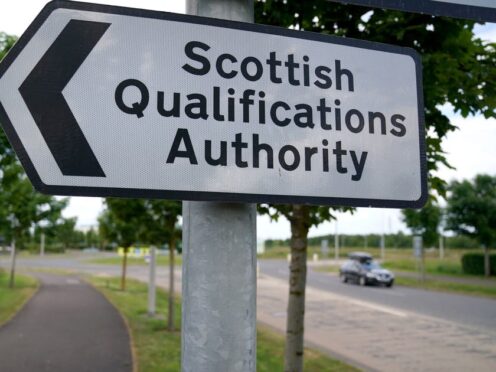Reports of “malpractice” in SQA exams almost doubled in the past year, new statistics indicate.
Almost 5,000 pupils, teachers, lecturers and senior examiners contributed to a survey about experiences of National Courses in 2023 in a bid to help the body make decisions about 2023-24.
The findings have contributed to Scottish Government plans for reviewing the maths curriculum, its education reform programme and its reminder to schools on the appropriate use of dual presentation.
The survey included analysis of the relationship between teacher estimates and results, and the performance of National 5 Maths, where A-C performance in 2023 fell below pre-pandemic levels, but statistics about “malpractice” were also released.
In the 2022-23 session, there were 145 cases of candidate malpractice in National 5, Higher and Advanced Higher courses, up from 76 in the 2021-22 session – representing 0.027% of the 540,950 entries for these courses.
The survey found 71% of students and 66% of practitioners agreed that how qualifications were going to be assessed was communicated to them effectively, and 76% of learners and practitioners agreed they had understood how grades would be determined.
Some 58% of pupils and 50% of practitioners agreed the assessment process was fair, and 55% of pupils and 53% of practitioners agreed they were satisfied with it.
Meanwhile, 66% of practitioners thought grades awarded in 2022-23 were either very credible or credible, and 95% of senior examiners agreed the approach used for awarding in 2022-23 ensured all factors were considered when setting grade boundaries.
Another 78% of practitioners and 59% of senior examiners agreed that the national standard was consistently understood and interpreted by practitioners.
Martyn Ware, director of policy, analysis and standards at SQA, said: “We are committed to hearing what our stakeholders, in particular teachers and learners, have to say about their experiences of our qualifications and assessments.

“This research, following the evaluations published in 2022 and 2023, is vital to ensure that we continue to deliver for Scotland’s learners, the economy and wider society by bringing practitioners and learners into the heart of our decision making.
“We are immensely grateful to the learners, teachers, lecturers and senior examiners who gave their time to share their experiences. It is particularly encouraging to see the 67% increase in the number of learners engaging with us, compared to last year, including those with disabilities, with additional support needs, with a range of equalities characteristics and from different SIMD quintiles.
“The research findings have helped to build a picture of the experiences of learners, teachers, lecturers and senior examiners from across Scotland in 2023 as we continued to work through the long-term impact of the Covid pandemic on our education system. They reflect the diverse and often differing experiences and views of our education community.
“It is important that we share the findings of this extensive research with the wider education community and explore with them the implications for our future approaches. The research will add to the other sources of insight into how the 2022-23 session performed, such as national attainment data, published last August.
“Understanding the benefits and challenges of different arrangements is invaluable and creates a record and evidence base to support continued dialogue and decision-making as Scotland continues to consider the scale and scope of education reform.”
